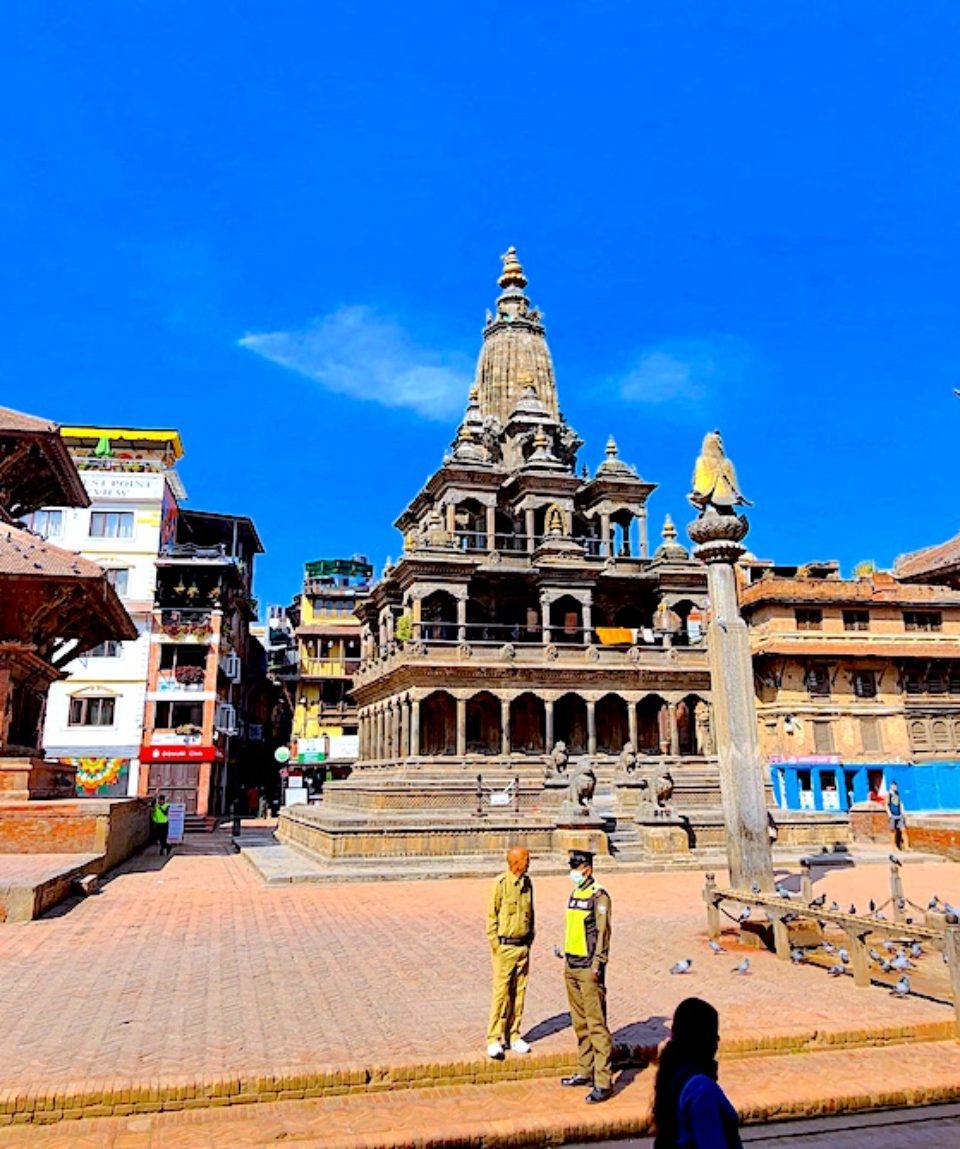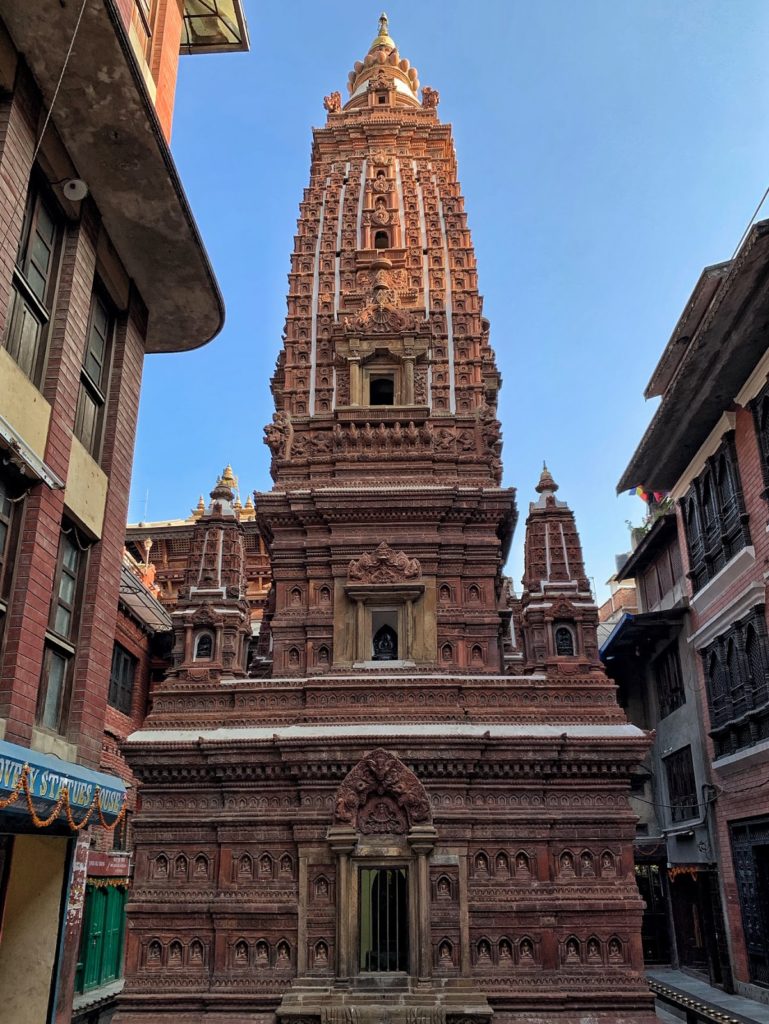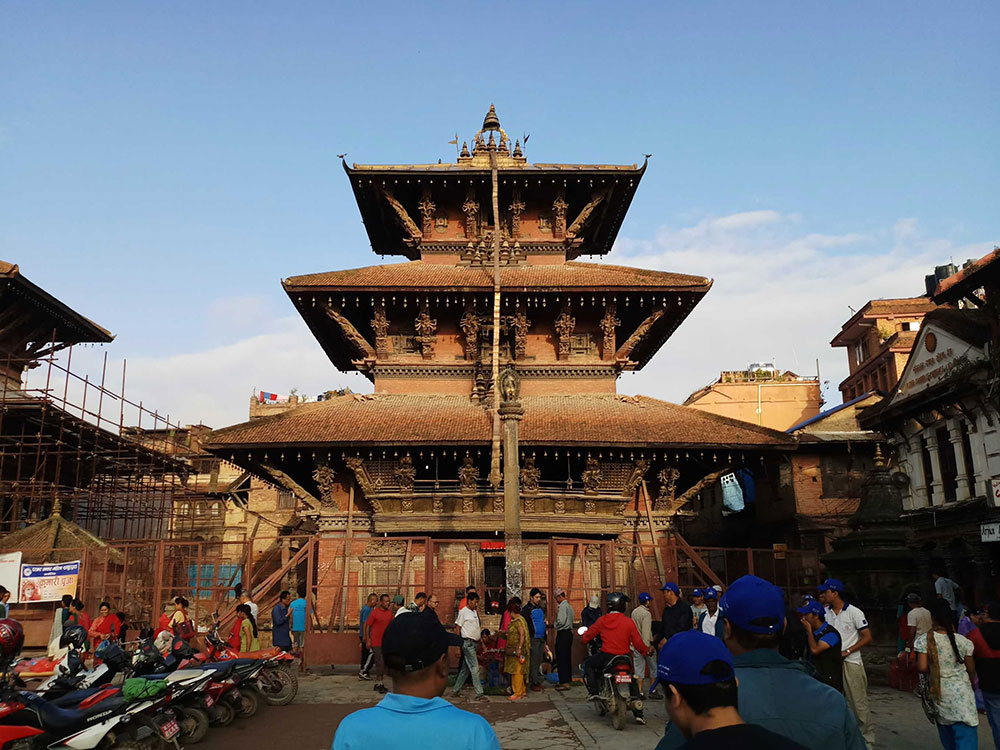Patan Day Tour
fromPatan is a historical city inside kathmandu Valley with antique monuments. Scratching back to the history of Kathmandu – Patan comes in all of them. Stories behind the city is interesting. Patan Durbar Square is located at the heart of heritage the city of Lalitpur. It is one of the, three Durbar Square inside Kathmandu valley & it is also listed in the world UNESCO heritage sites. Patan day tour is special because of its historical importance and wide excursion perimeter.
-
Reviews 0 Reviews0/5
-
Vacation Style Holiday Type
-
Activity Level Fairly Easy
-
Group Size Medium Group
We start our day tour after entering through the Patan Gate. This gate is the entry point of the majestic durbar square that awaits us. We take some moments to witness the Newari atmosphere – from attire to food, from architecture to language, an authentic wave that we have never encountered before welcomes us. We enter from here and start to see a typical Newari Culture. Through the gate, we enter Durbar Square.
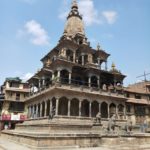 Krishna Mandir
Krishna Mandir
Our first destination is Krishna Mandir. One of Patan’s most stunning temples is Krishna Mandir, which is situated in front of the Royal Palace. After having a dream in which Lord Krishna and his wife Radha were standing in front of his palace, King Siddhi Narasimha Malla decided to have the Hindu Shikhara-style temple built there in 1637.
The stone temple exhibits the superb craftsmanship characteristic of the Malla period. Lord Krishna is honored on the first floor, Lord Shiva on the second, and Lord Lokeshwor on the third (Avalokiteshvara). In front of the temple is a statue of Garuda perched atop a pillar.
Hearing the tales sheltered by this temple, we will spend some time reliving the history and head towards our next destination: Chyasin Dewal.
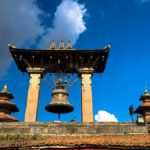 Chyasin Dewal and Taleju Bell
Chyasin Dewal and Taleju Bell
The other temple honoring Lord Krishna is Chyasin Dewal, which was constructed in 1723 by Yogamati, the king of Yoganarendra Malla’s daughter. It is a stunning octagonal stone temple; the title “Chyasin” refers to the temple’s eight-sided shape.
According to legend, the temple was constructed in honor of the 32 women—more specifically, the 8 wives and 24 concubines—of King Yoganarendra Malla who committed satis upon the monarch’s passing (sati was an ancient inhumane practice in which a widow had to self-immolate during the funeral ceremony of her deceased husband).
As we leave the temple, we shall come across Chyasin Dewal and the enormous cast-iron Taleju bell. King Vishnu Malla built the bell in 1736. The bell was used by the populace to inform the King of their complaints. Additionally, it served as a warning signal to the King when his adversaries drew near.
We are certain that this monumental temple will leave you in awe, to keep you in this amazement, we will take you to the Bhimsen Temple.
 Bhimsen Temple
Bhimsen Temple
The Bhimsen Temple, constructed in 1681 by King Srinivasa Malla, honors Bhimsen, the God of Business and Trade, one of the five Pandavas from the Mahabharata. The three connected golden windows on the three-story pagoda are its most distinctive feature.
We will rest for some time in this temple to hear the run-down of how the great tale of Hinduism: Mahabharata went ahead. This story will allow you to feel the essence of this temple and create memories that will remain with you forever.
Upon listening to the tales, we will stop by a local Newari eatery shop and have some Juju Dahu and Chatamari or Bara.
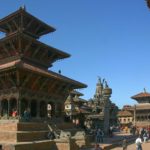 Vishwanath Temple and Hari Shankar Temple
Vishwanath Temple and Hari Shankar Temple
King Siddhi Narasimha Malla erected the magnificent two-story Vishwanath Sanctuary in 1627 as a temple to Lord Shiva. This temple’s entrance is guarded by two stone elephants. The temple contains a Shiva Linga.
The 2015 earthquake entirely wrecked the Hari Shankar temple, however, it was fully rebuilt in 2019. The Hari Shankar Temple is a three-story temple constructed in 1705 by the daughter of King Yoganarendra Malla and devoted to both Lord Shiva (Shankar) and Lord Vishnu (Hari).
These two temples are the prime embodiments of two of the Trimurti of Hinduism. Observing a divine aura around the temple, we will find ourselves merged into a different matrix of joy and compassion. This is also the primary beauty of Patan. These two temples will be the last temples we would visit inside Patan Durbar Square, we will enter the Royal Palace from here.
The Royal Palace and Patan Museum
The main draw of Patan is the historic Royal Palace, where the Malla Kings once lived. The compound has three main courtyards, or “chowks,” named Keshav Narayan Chowk, Mul Chowk, and Sundari Chowk in Nepali.
 Keshav Narayan Chowk
Keshav Narayan Chowk
The royal palace of the Malla Kings’ domestic courtyard, Keshav Narayan Chowk, was constructed in 1734. The Keshav Narayan Temple, which is devoted to Lord Vishnu, is located in the chowk’s middle. This chowk is well-known for its magnificent Golden Gate and the two lions (a male and a female) that stand at the entrance and defend it. The Patan Museum is also located in Keshav Narayan Chowk.
The Patan Museum, which King Birendra Bir Bikram Shah opened in 1997, houses one of Nepal’s best collections of religious art, with a focus on Buddhism and Hinduism. Additionally, it houses some of the most exquisite bronze statues and traditional Newari crafts. My favorite museum in the Kathmandu Valley ended up being the Patan Museum.
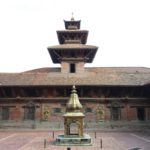 Mul Chowk
Mul Chowk
Mul Chowk, the largest of the three principal chowks around the Royal Palace, was rebuilt in 1666 by King Srinivasa Malla. Yantaju, a personal deity of the Malla Kings, has a stunning shrine located in the middle of Mul Chowk.
You may also find the magnificent Taleju Bhawani Temple (1671) and the Degutale Temple (1661), both of which are dedicated to Goddess Taleju, inside Mul Chowk.
Sundari Chowk
The smallest and most picturesque of the three principal chowks at the Royal Palace is Sundari Chowk, which was constructed in 1627. The stunning Tusha Hiti, also known as the Sundari Chowk’s Royal Bath, was constructed in 1647 by King Siddhi Narasimha Malla.
Bhandarkar Garden
The Bhandarkhal garden and its water tank are located behind Mul Chowk and Sundari Chowk. The Bhandarkhal water tank, constructed in 1647, served as the Royal Palace’s primary water source.
Now, we exit Patan Durbar Square and visit some places that are near Durbar Square. We start by visiting the Golden Temple. But, before we enter the temple, we will have our lunch and spend some time at the Bhandarkhal Garden to rest and have some cultural conversation with the locals or your guide.
 The Golden Temple
The Golden Temple
The Golden Temple, also known as “Kwa Bahal” or “Hiranya Varna Mahavihar,” was founded in 1045 by King Bhaskar Deva Varma and constructed in its current form in 1409. “Hiranya Varna Mahavihar” is Sanskrit for “Monastery with a Golden Color,” and refers to the magnificent three-story Buddhist monastery. The complex has an amazing design. You may locate a wonderful shrine with a large statue of Shakyamuni Buddha inside the courtyard. Beautiful craftsmanship will be wherever you look. You can ascend the stairs to the monastery’s upper level. In each corner of the courtyard are four statues of monkeys holding jackfruits. Do not overlook them.
According to a long-standing tradition, rice is kept inside the temple to feed the mice; the custom had its start when King Bhaskar Varma saw a golden rat chasing a cat there.
We will continue visiting temples, as we head to the Kumbeshwar Temple and Baglamukhi Temple.
The Kumbeshwar temple and Baglamukhi temple
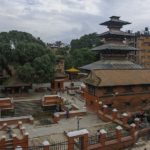 The oldest Hindu temple in Patan is the Kumbeshwar temple. King Jayashiti Malla is said to have constructed it in the 14th century (really in 1392). The five-story temple, which is dedicated to Lord Shiva, is one of the highest in the Kathmandu Valley (and one of just two five-story temples in all of Nepal; the other being Nyatapola temple in Bhaktapur). Within the complex, there are two ponds (hitis). According to tradition, the water in the ponds is drawn directly from Gosaikunda, a lake that Shiva created with the use of his trident after ingesting the poison and being dehydrated.
The oldest Hindu temple in Patan is the Kumbeshwar temple. King Jayashiti Malla is said to have constructed it in the 14th century (really in 1392). The five-story temple, which is dedicated to Lord Shiva, is one of the highest in the Kathmandu Valley (and one of just two five-story temples in all of Nepal; the other being Nyatapola temple in Bhaktapur). Within the complex, there are two ponds (hitis). According to tradition, the water in the ponds is drawn directly from Gosaikunda, a lake that Shiva created with the use of his trident after ingesting the poison and being dehydrated.
The well-known Baglamukhi temple, which honors Goddess Baglamukhi, is located inside the Kumbeshwar complex (Parvati, the consort of Shiva).
We will be welcome by another temple: The Mahabuddha temple.
 The Mahabuddha temple
The Mahabuddha temple
The Mahabuddha Temple popularly referred to as the “Temple of a Thousand Buddhas,” is a stunning Buddhist temple dedicated to Siddhartha Gautama. It is said that the temple was built in 1585. (although some sources say 1564-1565 or around 1601, sometimes 1610). The Mahabuddha temple is known as the “Temple of a Thousand Buddhas” because it contains hundreds of Buddha figures carved into terracotta tiles. Unfortunately, the building was harmed by the earthquake in April 2015 and was still being renovated when we last were there.
As our final destination of the tour, we will head to the Rato Machhendranath temple.
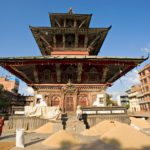 The Rato Machhendranath temple
The Rato Machhendranath temple
The Rato Machhendranath temple, a stunning three-story shrine to Machhendranath, the God of Rain and Harvest, was constructed in 1673. (an incarnation of Avalokiteshvara for the Buddhists and an incarnation of Lord Shiva for the Hindus). A blue metal fence has been built around the temple after some of its artifacts were stolen by criminals. If you want to see the temple up close, don’t be afraid to enter the courtyard. The temple is open to everyone without a cost.
To end the tour, we will stop by Mangabazar and witness the local market. If you like, you can also buy handicrafts, shawls, and food items.


